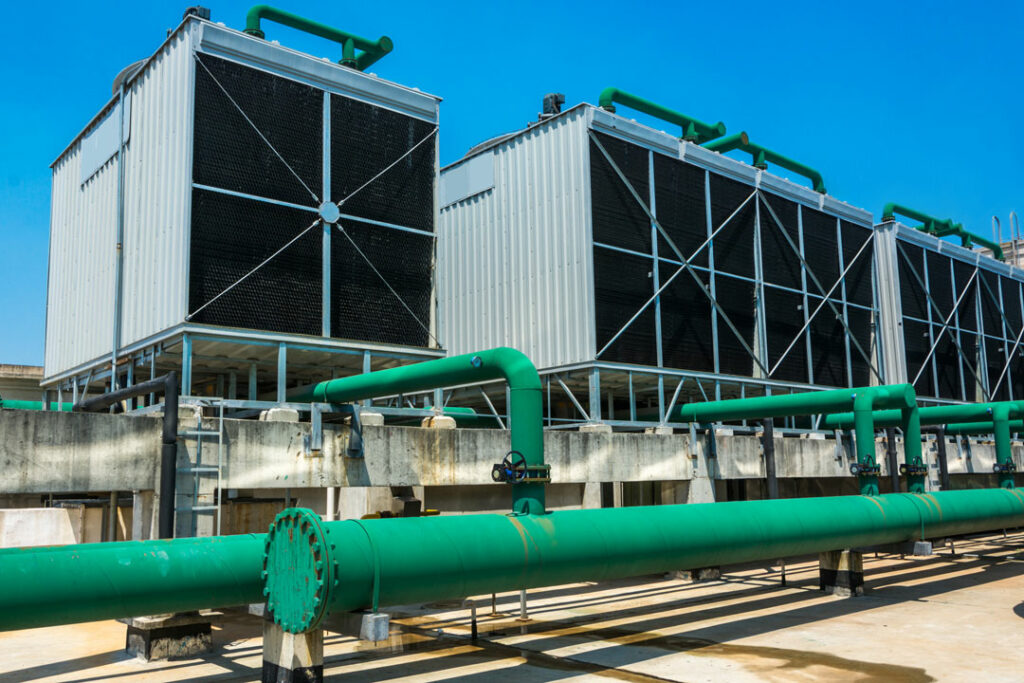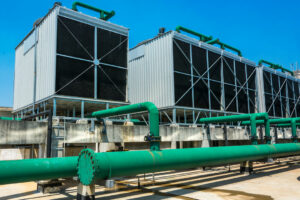The world becoming progressively dependent on digital technology and the demand for data centers has been skyrocketed. The servers, which are the heart of data centers store, process, and manage digital data. These servers consume significant amounts of electric energy and produce heat. To cool down the heat of the servers as well as the data hall, a cooling system is inevitable equipment of the data centers. To maintain the operational condition in terms of heat and humidity of the data centers, water is a primarily used cooling medium in the data center industries. In fact, data centers are a major consumer of fresh water. It is estimated that the global data center industry uses up to 1.5% of the world’s freshwater supply.
As more and more data are generated, more water will be needed to cool data centers. The increasing demand for cloud computing is putting a strain on water resources. This high water usages of data centers pose a significant challenge to environmental, social, and corporate governance (ESG). It could lead to the depletion of local water resources and intensify water scarcity in some areas. To ensure environmental responsibility and data center sustainability, water resources management has become an essential aspect of the data center industry.
In this article, I am going to discuss the importance of water resource management in the data center industry and explore some modern solutions for water resource management.
1. The aspects of water resource management in the data center industry for ESG
Water resources management is important for the data center industry for several reasons. First, water resources management can help to improve the efficiency of data center cooling systems. This can save energy and money. Second, it can help to reduce the amount of water used by data centers. This can help to conserve water resources and prevent water shortages. Also, water resources management can help to protect the environment. By reducing the amount of water used by data centers, we can help to protect rivers, lakes, and other water bodies. Thirdly, water.
1-a) Cost reduction
Reducing water usage in data centers translates to cost savings for operators. Water consumption and associated costs can be significantly decreased by implementing water-saving technologies and practices, leading to a more cost-effective and sustainable operation.
1-b) Reduction of environmental impact
By conserving water, data centers can reduce their environmental footprint and contribute to the responsible management of global water resources. This is particularly important in regions experiencing water stress or scarcity, where water conservation can help mitigate the risk of depleting critical water supplies.
1-c) ESG or other regulatory compliance
As concerns over water scarcity and resource management grow, regulatory bodies are increasingly focusing on the water usage of various industries, including data centers. By adopting water conservation practices, data centers can ensure compliance with current and future regulations, avoiding potential penalties or restrictions.
2. Techniques for water resource management in data centers
There are a number of ways to manage water resources in data centers. One way is to use more efficient cooling systems. Another way is to use recycled water or water from non-potable sources. Data centers can also reduce their water usage by using less energy. This can be done by using more efficient servers and by implementing energy-saving measures such as power-saving modes.
Water resources management is an important issue for the data center industry. By taking steps to manage water resources, data centers can help to conserve water, improve efficiency, and protect the environment.
2-a) Reuse and recycling of water:
One way to water conservation in data centers is the implementation of water reuse and recycling systems. By capturing and treating wastewater, data centers can reduce their overall water consumption and limit their impact on local water resources. This can include capturing condensation from cooling systems, recycling water used for cooling, or even utilizing alternative water sources, such as rainwater or grey-water.
Currently, Amazon Web Services (AWS) uses recycled water for the cooling purposes in 20
data centers around the world such as Virginia (US), Oregon (US), California (US), United Kingdom, Brazil, South Africa, India, Indonesia,
and Singapore region.
2-b) Use of Air-cooled cooling systems:
Another approach to reducing water consumption in data centers is by using air-cooled systems, which rely on fans or natural convection to dissipate heat. While air-cooled cooling systems can be less efficient than water-cooled systems in certain scenarios, advances in technology and innovative design approaches have significantly improved their performance and viability as sustainable cooling solutions. For example, a company called KyotoCooling LLC. produces a completely water-free cooling system. The average Power Usage Effectiveness (PUE) across all current KyotoCooling installations worldwide is less than 1.25.
2-c) Liquid immersion cooling technique:
Liquid immersion cooling is an innovative technique that involves submerging servers in a non-conductive liquid coolant. This method efficiently transfers heat away from the servers, reducing the need for traditional cooling infrastructure and minimizing water usage. While still relatively new, liquid immersion cooling has the potential to revolutionize data center cooling and contribute to water conservation efforts.
2-d) Other approaches to address the issue:
Here are some specific examples of how data centers are managing water resources:
- Google has a number of data centers that use seawater for cooling. This helps to reduce the company’s reliance on freshwater.
- Facebook has a data center in Prineville, Oregon, that uses recycled water for cooling. This helps to conserve freshwater resources in the area.
- Microsoft has a data center in Quincy, Washington, that uses a combination of recycled water and air cooling. This helps to reduce the company’s water usage and energy consumption.
These are just a few examples of how data centers are managing water resources. As the demand for data continues to grow, it is important for the data center industry to find ways to conserve water and protect the environment.
Final Words
Water resources management is an essential aspect of sustainability for the data center industry, with significant environmental, economic, and regulatory implications. By incorporating innovative solutions and adopting water-saving practices, data centers can reduce their water consumption, contributing to the responsible management of global water resources and ensuring the long-term viability of the data center industry.



